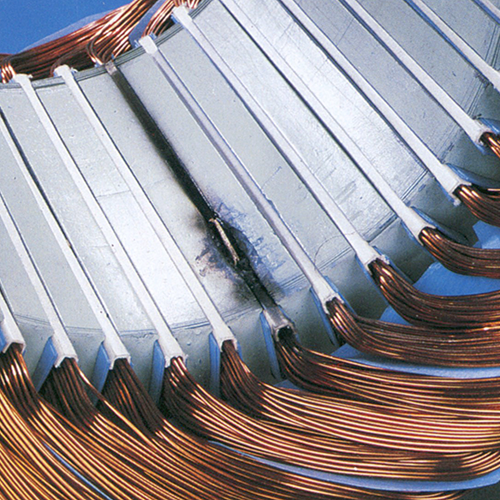
Understanding Electric Motor Rewind
What is Electric Motor Rewind
Electric motor rewind, also known as motor winding, is a specialized process performed in motor repair shops. This procedure involves replacing a motor stator’s copper windings to restore performance.
Electric motor rewinding is not just about wrapping wires. It's a meticulous process involving the removal and replacement of the existing copper windings, which are integral to motor efficiency.
By conducting an electric motor rewind, you rebuild the motor to its optimal condition, ensuring longevity and consistent performance. Motor rewind is a cost-effective way to extend the life of the machine at a fraction of the price of a new electric motor.
Here, we'll delve into the types of failures that three-phase stators can face and rewind procedures.
Types of Failures in Three-Phase Stators
Three-phase stators play a pivotal role in distributing the energy that the motor consumes. The symmetrical power distribution in stators means that they are often used in high-power applications. Three-phase stator failures in electric motors can occur due to various reasons, including rigorous demand and run time, environmental issues, or electrical events. It's essential to identify and correct the cause of failure in order to prevent recurrent problems. Square One Eledctric's technicians are experienced with finding the root cause of failure in order to help avoid future issues.
Types of failures in three-phase stators:
-
Winding Insulation Failure:
- Ground Insulation Failure: When the insulation between the copper motor windings and the stator core breaks down, it can result in a ground fault. This can lead to short circuits and motor overheating. Grounding can occur either in the slot or at the edge of the slot.
- Phase-to-Phase Insulation Failure: Breakdown of insulation between different phases of the stator windings can cause phase-to-phase faults, resulting in unbalanced currents and motor instability. This type of insulation failure is typically caused by contaminants, abrasion, vibration, or voltage surge.
-
Shorted Turns:
-
- Turn-to-Turn Short: Short-circuits between adjacent turns of the same winding can occur due to insulation degradation or mechanical damage. This can lead to current imbalances and overheating. This type of insulation failure is typically caused by contaminants, abrasion, vibration, or voltage surge.
- Inter-Turn Short: Short-circuits between turns of different windings in the same phase can disrupt the motor's magnetic field and cause performance issues.
-
- Phase Imbalance:
